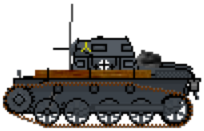
PzKpfw I ausf. A
- Wallendorf, Gemany
- May 10th, 1940
- 1. Abt, 1. PR, 1. PD
Early in the morning, the German 1st Panzer Division was camping out on the Luxemburg border, waiting for the sun and ready to attack France. It was going to be an interesting day without casualties - if you don't count that one police officer getting bitch-slapped.
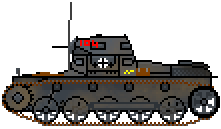
PzKpfw I ausf. B
- near the Groeningebrug, Kortrijk, Belgium
- 15:30, May 24th 1940
- 14. AufklAbt, 4. InfReg, IV Armeekorps, 6. Armee
The Germans had a Cunning Plan to avoid another trench war. They were going to lure the Allies to the North by invading Belgium and Holland, then cut in behind them and push towards Paris. This was Fall Gelb. It worked - the campaign was over before most people realised what had happened.
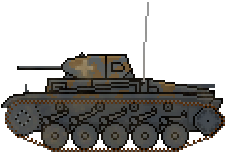
PzKpfw II ausf. C
- Sokole-Kuźnica, Poland
- September 16th, 1939
- "201", PR6, 3.PD
After the First World War, some of Germany's eastern provinces were added to Poland. (Thanks, mister Piłsudski...) The German General Guderian came from one of these provinces, so in a sense he was returning home when Fall Weiss began. The Wehrmacht won the campaign, but it did force them to have a good, hard look at their tactics and equipment.
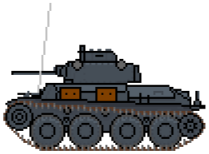
PzKpfw 38(t) Ausf. C
- Flavion, Belgium
- early in the morning, May 15th, 1940
- 25e PzReg, 7e PzDiv "Gespensterdivision"
Rommel's 7th Panzerdivision met some French Char B1b's near the Belgian town of Flavion. The French tanks were bigger, stronger and better armed than their German counterparts, but they were scattered and confused. Rommel did what he did best; he drove on, and let the rearguard use their FlaKs on the French.
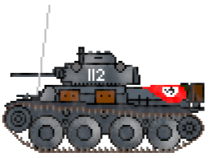
PzKpfw 38(t) Ausf. E
- Borisov, Belarus
- July 3rd, 1941
- PzAbt I, 28e PzReg, 18e PzDiv
The Germans got quite a scare when they first encountered Soviet T-34s. In one instance, the 18e Panzerdivsion was flank attacked by brand-new T-34s from the local military school and Yakov Kreizer's 1st "Moscow" motorised infantry division. Those hit the Germans pretty hard, but could not stop them.
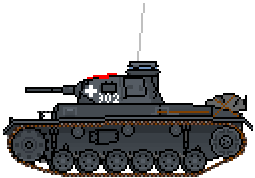
PzKpfw III ausf. E
- Ochota, Warsaw, Poland
- September 8th, 1939
- PR. 35, PD. 4
- Hauptfeldwebel Ziegler
Fall Weiss was not the armoured rollercoaster that people sometimes imagine it to be. Ask Hauptfeldwebel Ziegler - he was kicked straight back out of Warsaw by the defending Poles.
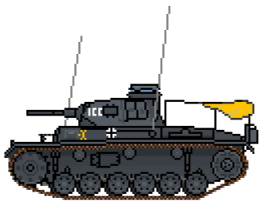
PzBfw III ausf. E
- near Rotterdam, the Netherlands
- May 13th, 1940
- 1. Abt, 33. PR, 9. PD"
Because the Dutch expected that they could remain neutral, as in the First World War, they were terribly unprepared for what was to come. So when the German army crashed their party, it was all over rather quickly. The Dutch soldiers did sometimes manage to hurt the Germans, and this story is about one of the small battles in which they did.
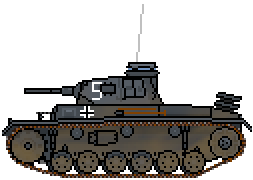
PzKpfw III ausf. E
- Chateau de Quesnoy-sur-Airaines, France
- May 25th, 1940
- 25. PR "Mondschein", 7. PD
By the 25th, Northern France had fallen. General Weygand didn't have the troops for a continuous front line, so he decided on impromptu forts or "hedgehogs" to hold the German attack. One of these hedgehogs was manned by Nigerian troops (10ème Compagnie, 53ème Régiment d'Infanterie Coloniale), who proved quite tough, contradicting Nazi racial prejudice. However, as usual the Panzer just ignored the resitance and moved on.
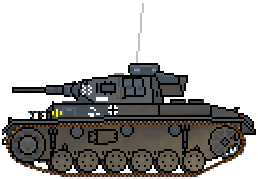
PzKpfw III ausf. J (Kurz)
- Rostov on Don, Russia, USSR
- 22 november 1941
- 13. PD, 1.PzArmee, AG Süd
By novermber 1941, Operation Barbarossa was grinding to a halt, because the supplies were running out. The Germans just managed to take Rostov on the Don but were soon kicked out again. This was their first serious defeat in the east.
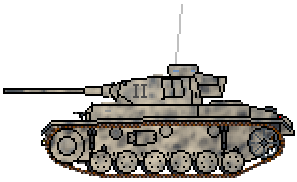
PzKpfw III ausf. J (Lang)
- near Kharkov, Ukraine, USSR
- March 30th, 1943
- "4L1", II. Abt, 1. PzReg, 1. SS PzDiv "LSSAH"
- Michael Wittmann
This is Michael Wittmann's first little tank. He really wanted a Tiger but instead, he got a Panzer III and was sent off as a screening force during the Third Battle of Kharkov. He was actually quite talented as a commander, and quickly got his own platoon.
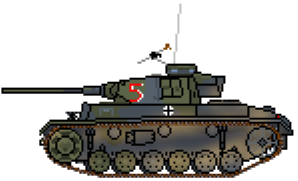
PzKpfw III ausf. L
- Agropoli, Italie
- July 1943
- 1e Co, 2e PzReg, 16e PzDiv, LXXVI Korps
- Hauptmann Friedrich-August Graf von Brühl
Because of the Dieppe raid, the allies practised amphibious, opposed landings in North Africa ("Torch") and Italy. At Salerno, eminently better suited to lounging and swimming, Herr Graf von Brühl nearly succesfully tried to hold off the Amis.
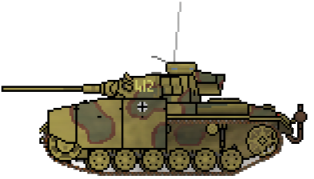
PzKpfw III ausf. M
- near Kursk, Russia, USSR
- July 6th, 1943
- 23e PzReg, 2e PzDiv
On the first day of Unternehmen Zitadelle, the Germans penetrated the Soviet defenses a few miles. On the next day, elements of the 2nd Panzer, 20th Panzer, and 6th Infantry Divisions (including this tank) tried to take Hill 274 near Olkhovatka, but they never would. One could even say that on this day, the Germans definitely lost the war.
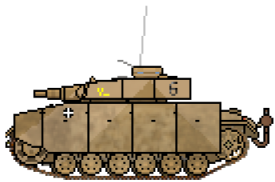
PzKpfw III ausf. N
- Tebourba, Tunesie
- December 3rd, 1943
- "21", 2e Zug, 1e Co, sPzAbt 501
When sPzAbt 501 hit the beach at Tunis, they were equpped with three Tigers and four Panzer IIIs - not what you'd call heavy. Organised into KG Lüder, they moved west to Tebourba, destroying much British and American hardware. However, as their Tigers were also damaged or destroyed, the Kampfgruppe was temporarily disbanded.
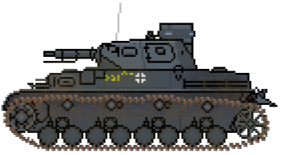
PzKpfw IV ausf. D
- Bazeilles, Sedan, France
- May 12th, 1940
- "32", 2. PR, 10. PD
- Feldwebel Walter Rubarth
Sedan is like the linchpin of Franco-German relations: any army going either way will pass this city. In 1940, Sedan had to be taken quickly because any delay would (possibly) have meant French reinforcements.
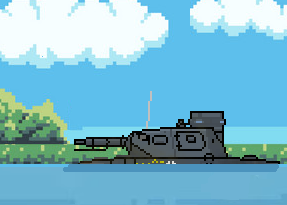
PzKpfw IV ausf. D
- river Maas, near Dinant, Belgium
- May 13th, 1940
- 2. Abt, 31. PR, 5. PD
- Lt. Heinz Zobel
Panzer of the Lake is not about cutlery dispensing, watery tarts but about Heinz getting stuck in the Maas river and Rommel not understanding science.
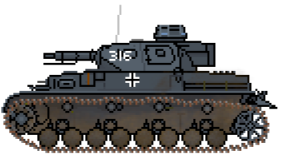
PzKpfw IV ausf. E
- Sint Lenaarts, Belgium
- May 15th, 1940
- May 15th, 1940
Apparently the French passed through the village where I grew up on their way to meet the Germans near Breda, but they returned south a few days later with the enemy in hot pursuit. Apart from a few StuKa bombing runs on the Hoogstraatse baan and bridge 9, not much happened until 1944, when the Allies arrived and blew up the local windmill..
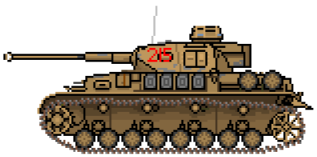
PzKpfw IV ausf. F
- El Alamein, Egypt
- July 2nd, 1942
- '215', 5. PzReg, 21. PzDiv
There were actually two battles of El Alamein. We all know about the second one, because the British won. The first battle, however, involved a badly coordinated British counterattack, a sandstorm and some excellent FlaK-guns. Bottom line - the UK lost this round, causing Bernard Montgomery to step into the ring.
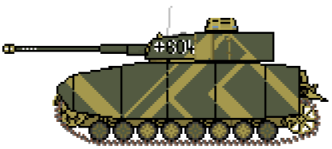
PzKpfw IV ausf. H
- Abbey "des Ardennes", Franqueville, France
- June 7th, 1944
- 2. Abt., 12. SS PzDiv "Hitlerjugend"
- Oberst Kurt Meyer
Watching from the tower of Abbaye des Ardennes, Kurt Meyer saw the Canadians coming. However, his Panther were out of fuel - again. So it would fall to his boys and their Panzer 4s to fight off the Allies. They did so quite fanatically, and shot a lot of captives in the process - something Kurt was nearly executed for.
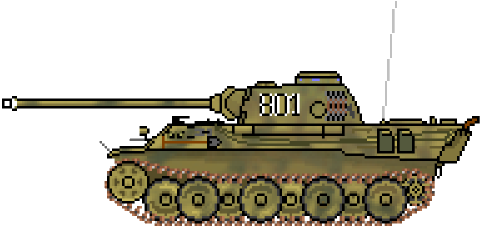
PzKpfw V ausf. D
- Kursk, Russia, USSR
- July 7th, 1943
- "432", PzAbt 51, PR 39, PzGrenDiv "Großdeutschland"
The Panther tanks were first used at Kursk in 1943, by PzAbt 51 and 52 of Großdeutschland. The battle was even postponed because the things needed just a little more work. And, being the first production models, most broke down before they even reached the battlefield. But the ones that did, were excellent.
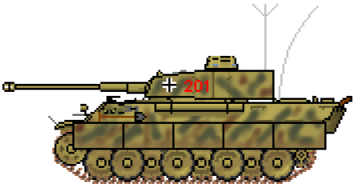
PzKpfw V ausf. D/VI-H
- Lutsk, Ukraine, USSR
- February 10th, 1944
- 2. Kp, 653e sJpzAbt, 1. Panzerarmee
Schwere Jagdpanzerabteilung 653 was supposed to use Elefants, but its workshop had a reputation for turning out "funnies". For example, a T34-FlaKpanzer or this one: Major Steinwachs' Bergepanther that got a Panzer IV H's turret (with a fake cannon) fixed to it. The unit had to fight its way out of the Kamenets–Podolsky pocket, where the Germans lost an unsustainable amount of people and equipment.
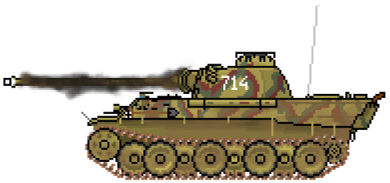
PzKpfw V ausf. A
- Teklyne, Ukraine, USSR
- January 20th, 1944
- 5e SS PzDiv "Viking"
The 5th "Wiking"was the first 'international' (or non-German) Waffen-SS division, combining volunteers from mainly Belgium, Holland, France, Denmark, and Norway. The division was active on the Eastern Front, where it proved to be a very capable group of soldiers. One of its units was SS Sturmbrigade "Wallonien", lead by a Walloon named Leon Degrelle, who is NOT related to Tintin.
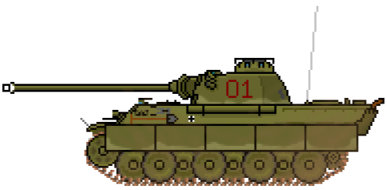
PzKpfw V ausf. A
- Târgu Frumos, Romania
- January 20th, 1944
- "01", PzReg "Großdeutschland"
- General-Major Willi Langkeit
Großdeutschland was holding the line at Târgu Frumos, in an attempt to hold off the Soviet wave rolling towards the Heimat. This battle is a good example of how to conduct a mobile defense: the commander (Hasso von Manteuffel) personally lead the counterattacks, they used hunter-killer teams with Panzerfauste and Tellerminen, hidden FlaK gun killzones, and at the most crucial point of the battle, the Tigers of GD's III. Panzer-Regiment showed up.
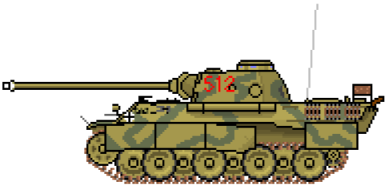
PzKpfw V ausf. G
- Le Lorey, Normandy, France
- July 27th, 1944
- 2e SS PzDiv "Das Reich"
- Oberscharführer Ernst Barkmann
Following the Allied invasion in Normandy, an ever growing flood of Sherman tanks was spamming the Germans. By that time the war was already over for them and I think many of the smarter Germans knew that very well. Maybe Ernst Barkmann knew too, but he was defending his crossroads and he wasn't giving up.
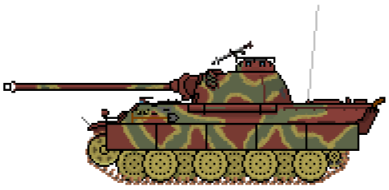
PzKpfw V ausf. G
- Hill 69.9, Tannenberg-line, Sinimäe, Estland
- August 16th, 1944
- SS-PzAbt 11, 11. SS Frw-PzGrenDiv
- Obersturmbannführer Paul Albert Kausch
After the Germans pulled back from Leningrad , they fell back on the Narva line. A little further to the east, you'll find three low hills and a small village: Sinimae. That village saw a LOT of fighting and some very sad Estonians.
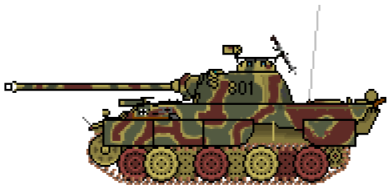
PzKpfw V ausf. G mit FG1250
- Zossen, Duitsland
- April 1945
- zKp z.b.V. “Dreyer”, KG "Ritter"
Literally speaking, the Panther was the world's first tank with night vision optics. (Yes, the British had TABBY, I know). It wasn't very useful, though - it only showed green blobs on a cathode ray tube, making IFF rather hard. A lot of myth surrounds these machines; no, they weren't used during Wacht am Rhein. On the Eastern front, though, they were: Hungary, Seelow and Zossen all saw IR assisted night fighting.
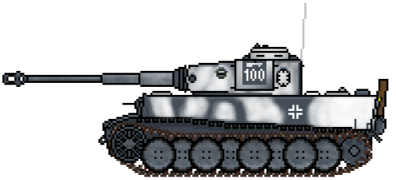
PzKpfw VI ausf. H1
- Mga, Russia, USSR
- August 29th 1942
- "100", sPzAbt 502
The first Tigers were field-tested near Mga, during the Siege of Leningrad. It was not a success: the engines overheated (in the snow!) and 'the guy from the factory' kept swearing at the crews. One Tiger got stuck so bad it had to be abandoned overnight, only to be 'recovered' by the Russians.
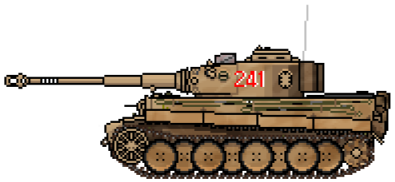
PzKpfw VI ausf. H1
- Foussana, Tunisia
- January 12th, 1943
- "241", 2. Kp, sPzAbt 501, 10e PzDiv
You may well know Tiger 313 at the Bovington museum. This is not that tiger. This one spent its time shooting up Shermans at Kesserine, and drove the Americans back to the Hatab river near Thala. Rommel wanted to crush the Amis in this battle, which he couldn't, but instead had to admire the speed at which they improved their operations.
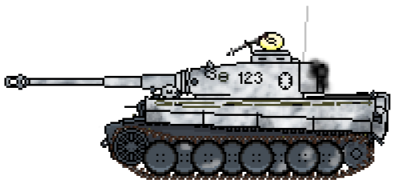
PzKpfw VI ausf. H
- Zhurzhyntsi, Ukraine, USSR
- 11 februari 1944
- "123", Schweres Panzer Regiment Bäke
Gruppe Stemmerman was caught in a kessel to the west of Cherkassy, near Shanderovka. Konev was going for a second Stalingrad, as he promised comrade Stalin, while Hitler's orders to "Never retreat!" did not help either. In the end, about a third of the local German force was lost - to an even higher Soviet cost.
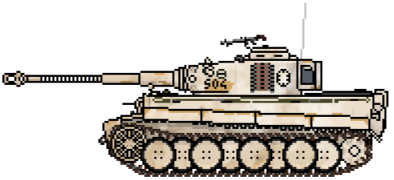
PzKpfw VI ausf. E
- Mezhyrichka, Ukraine, USSR
- November 21st, 1943
- "S04", 2e Co sSSPzAbt 101 "Leibstandarte Adolf Hitler"
- Hauptsturmführer Michael Wittmann
It was cold out there, and wet. Wittmann had the flu, but nevertheless decided to go out and make life miserable for the Russians. He was a Nazi posterboy and he had to be seen in battle - sick or not. He went to recon, on foot, and had a brief fight with a Russian tank commander who was doing the same. These things happen, you know…
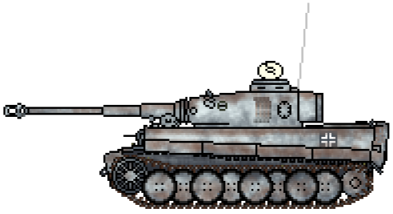
PzKpfw VI ausf. E
- Sinimäe, Estonia
- November 21st, 1943
- sPzAbt 501
- Otto Carius
With four Tigers, two StuGs and about 40 Panzergrenadiere, Otto defended of Sinimae against two whole Russian armies. Even if Otto and his friends tried really hard (and they did!), they were never going to hold the line.
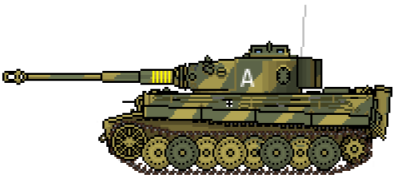
PzKpfw VI ausf. E(s)
- Coriano, Rimini, Italy
- September 14th, 1944
- "324", sPzAbt 504
sPzabt 504 was re-equipped with Tigers and sent to fight the Americans in Italy. The guys were fresh from the Eastern front, so I imagine they quite enjoyed the Italian countyside. A bit too much, perhaps: Tigers 312 and 324 were driving home in the dark, missed a sharp corner and drove straight into a ravine.

PzKpfw VI ausf. E(s)
- L'Abbaye Blanche, Mortain, France
- August 6th, 1944
- "812", III Abt. "DF", sSSPzAbt.102, 2eSS PzGrenDiv "Das Reich"
Very early in the morning III Abteilung "DF" approached the crossroads at L'Abbaye Blanche, just north of Mortain. They were told to defend it as part of operation Lüttich, but the Allies knew all about that. They were ready and waiting. The battle of Falaise that followed, effectively broke the Wehrmacht in France.
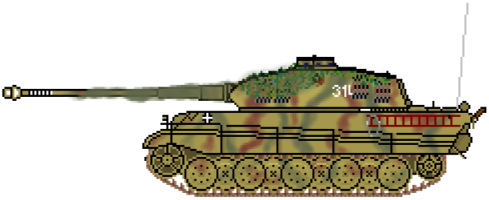
PzKpfw VI-B "Porsche"
- Cagny, near Caen, France
- July 10th, 1944
- "314 - Annelise", sPzAbt 503
- Leutnant Hans Joachim Jäckel
After the Korsun pocket, sPzAbt 503 was re-equipped and sent to France, to face the Allies during operation Goodwood. The British weren't playing fair, though: the German forces were attacked by literally a thousand bombers, plus Typhoons flying CAS. Most of the unit was bombed into oblivion and for thanks, the remainder were sent to freeze their asses of in Hungary
.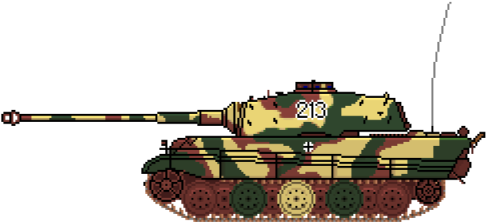
PzKpfw VI-B "Krupp"
- La Gleize, Belgium
- December 16th, 1944 (and still there!)
- "213", 2e Co sSSPzAbt 101 "Leibstandarte Adolf Hitler"
Kampfgruppe Peiper was the tip of the German spear during the Ardennes offensive. At La Gleize, the Americans slugged it out with Tiger II "213" and somehow managed to shoot its cannon in half. The tank was to be scrapped but a resident of La Gleize bought the wreck for a bottle of cognac. It's still there, and my children climbed all over it.
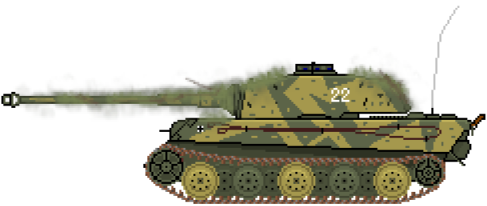
PzKpfw VI-B "Krupp"
- Jahnsfelde, near Berlin, Germany
- April 18th, 1945
- "22", sSSPzAbt 503, AG "Vistula"
The end was nigh, and (nearly) everyone knew it. The Russians were on the Oder, which is uncomfortably close if you live in Berlin. Because the Russians wouldn't be very friendly post-war, the remaining Nazi forces fought to the death. And I say Nazi because by that time, everyone else had already surrendered.
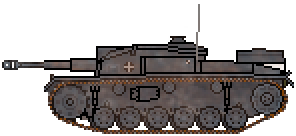
StuG III ausf F
- Train station, Stalingrad, Russia, USSR
- September 14th, 1942
- 2 Zug, StugAbt 244, 113. ID, 6. Armee
- Oberwachtmeister Karl Pfründtner
Karl was a nice boy, until he got mixed up with some bad friends. That took him to the war in the East, where he was quite succesful. And then, he died. Now, all we read of him is the same line, repeated everywhere. I try to fix that, but getting real info is hard, so I'm cheating.